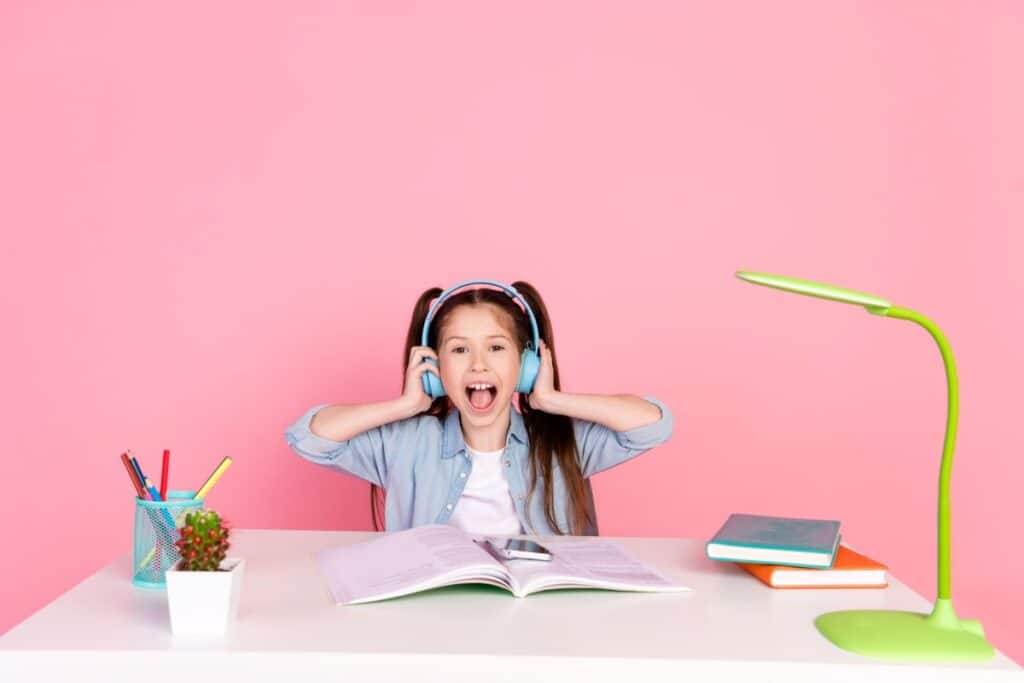Integrating music into educational environments is a practice with historical roots, yet its application in modern classrooms has taken on new dimensions.
Specifically, calming music for the classroom has emerged as an instrumental tool in enhancing the learning experience by educators.
The Science Behind Calming Classroom Music
Calming music, often characterized by its slow tempo, soft melodies, and harmonious tones, has been shown to influence physiological and psychological states.
Research in cognitive neuroscience and psychology suggests that calming music can alter brainwave patterns, reduce cortisol levels, and promote relaxation and focus. This section delves into the scientific mechanisms that underpin the benefits of calming music in educational settings.
Brainwave Entrainment and Cognitive Function
The concept of brainwave entrainment refers to the synchronization of neural oscillations with external auditory stimuli, such as music. Calming music, with its steady rhythms and soothing harmonics, can facilitate this entrainment, leading to enhanced cognitive function.
Studies have indicated that students exposed to calming music exhibit improved concentration, memory retention, and problem-solving abilities. This phenomenon is particularly advantageous in environments that demand sustained attention and cognitive engagement.
Stress Reduction and Emotional Regulation
The educational landscape is fraught with stressors that can impede learning and academic performance. Calming music acts as a natural antidote to stress by modulating the autonomic nervous system.
By reducing heart rate and lowering blood pressure, calming music fosters a state of tranquility, which is conducive to emotional regulation. This creates a nurturing environment where students can navigate challenges with resilience and composure.
Enhancing Classroom Dynamics with Music
In addition to its cognitive and emotional benefits, calming music plays a pivotal role in shaping the social dynamics of the classroom.
This section explores how music can transform the classroom atmosphere, fostering collaboration, inclusivity, and a positive learning environment.
Creating a Positive Learning Environment
Calming music has the power to transform the physical and emotional atmosphere of a classroom. It can mitigate noise pollution, reduce distractions, and create a serene backdrop that enhances students’ receptivity to learning.
Teachers who integrate calming music into their classrooms often report a noticeable shift in the classroom’s energy, characterized by increased student engagement and motivation.
Promoting Collaboration and Inclusivity
Music is a universal language that transcends cultural and linguistic barriers. By incorporating calming music from diverse genres and traditions, educators can promote inclusivity and cultural awareness.
This approach not only enriches the curriculum but also encourages collaboration among students from different backgrounds, fostering a sense of community and mutual respect.
Practical Applications of Calming Music in Education
Implementing calming music in classrooms requires thoughtful consideration and strategic planning. This section provides practical guidelines for educators seeking to harness the benefits of calming music for classroom enhancement.
Selecting Appropriate Music
The selection of music is crucial to achieving the desired outcomes. Educators should opt for instrumental compositions with a slow tempo and minimal fluctuations in dynamics.
Genres such as classical, ambient, and certain world music selections are ideal. It is advisable to avoid music with lyrics, as they can divert attention and disrupt the intended calming effect.
Integrating Music into Daily Routines
To maximize the benefits of calming music, educators should integrate it into daily classroom routines.
This can include playing music during transitions between activities, as background during independent work, or as part of mindfulness and relaxation exercises.
Consistency is key, as regular exposure to calming music can reinforce its positive effects on students’ cognitive and emotional well-being.
Empirical Evidence Supporting Calming Music in Classrooms
The efficacy of calming music in educational settings is supported by a robust body of empirical research. This section highlights key studies and findings that underscore the tangible benefits of calming music for classroom applications.
Academic Performance and Cognitive Gains
Several studies have demonstrated a correlation between the use of calming music and improved academic performance.
For instance, research conducted in primary and secondary schools revealed that students exposed to calming music during study sessions and examinations performed better in terms of accuracy and speed.
These findings suggest that calming music can enhance cognitive processing and facilitate learning.
Behavioral Improvements and Classroom Management
In addition to academic benefits, calming music has been linked to positive behavioral outcomes.
Teachers report reductions in disruptive behaviors and an overall improvement in classroom management when calming music is part of the daily routine.
This can be attributed to the music’s ability to create a structured and predictable environment, which is essential for effective classroom management.
The Future of Calming Music in Education
As educational paradigms continue to evolve, the integration of calming music in classrooms represents a promising avenue for enhancing the learning experience.
By leveraging the cognitive, emotional, and social benefits of calming music, educators can create enriching environments that foster academic success and personal growth.
Future research and innovation in this field hold the potential to further refine and expand the applications of calming music in education, ultimately benefiting students and educators alike.
In conclusion, calming music for the classroom is more than just an auditory enhancement; it is a powerful pedagogical tool that can transform the educational landscape. By embracing this approach, educators can unlock new possibilities for student engagement, well-being, and achievement.
Educators never stop learning; check out our available graduate degree programs to hone your skills and promote lifelong learning and academic excellence.




